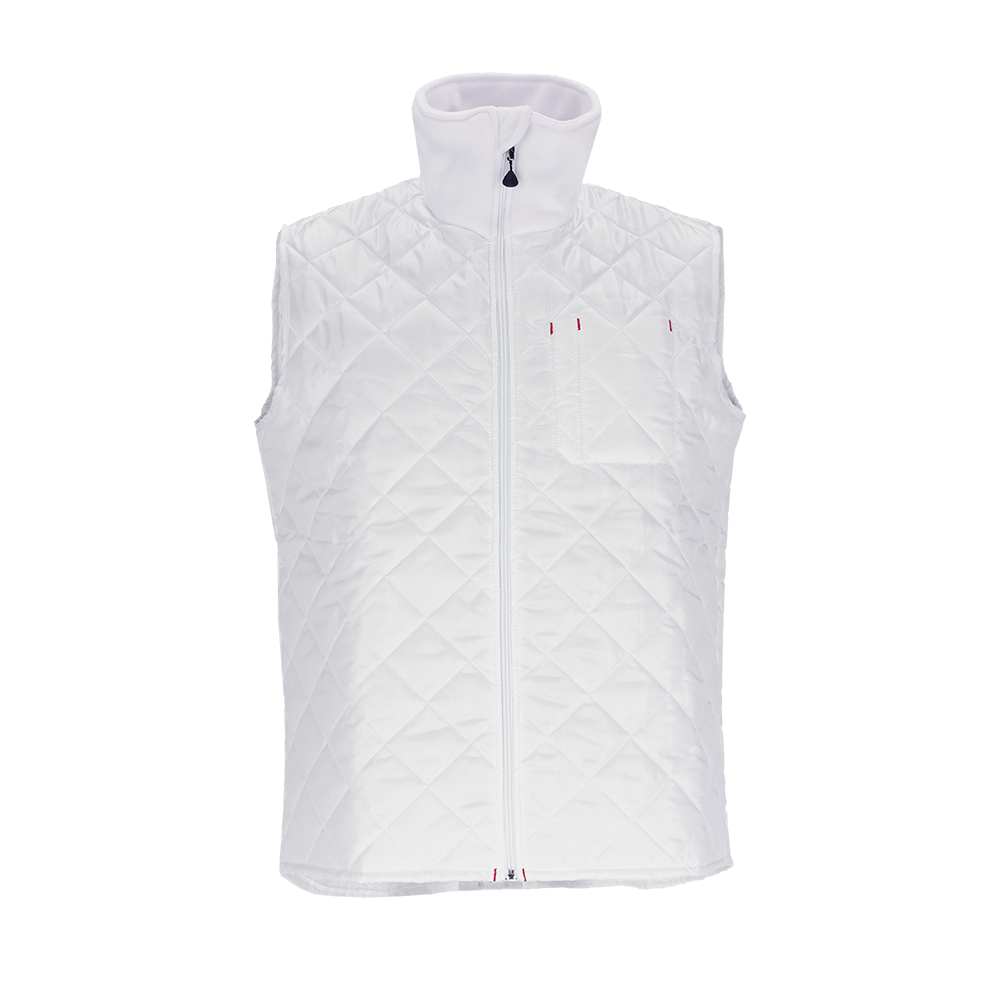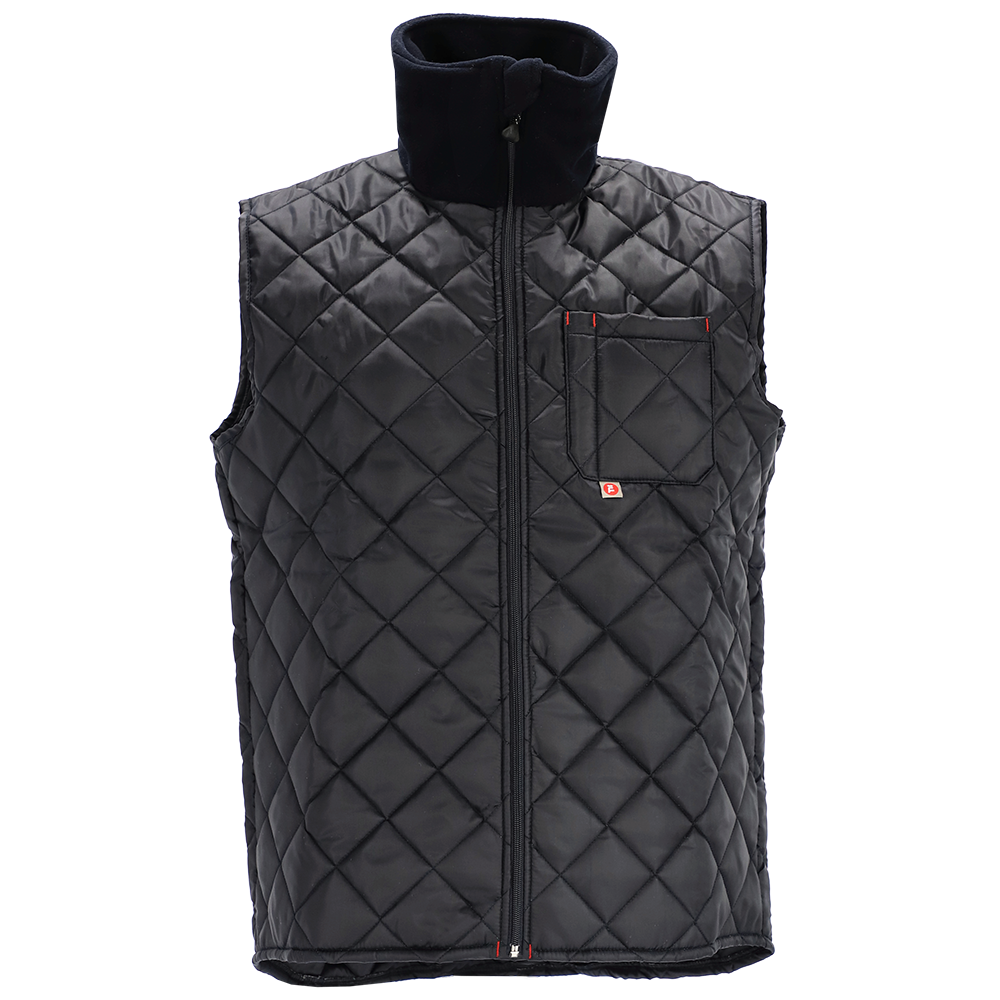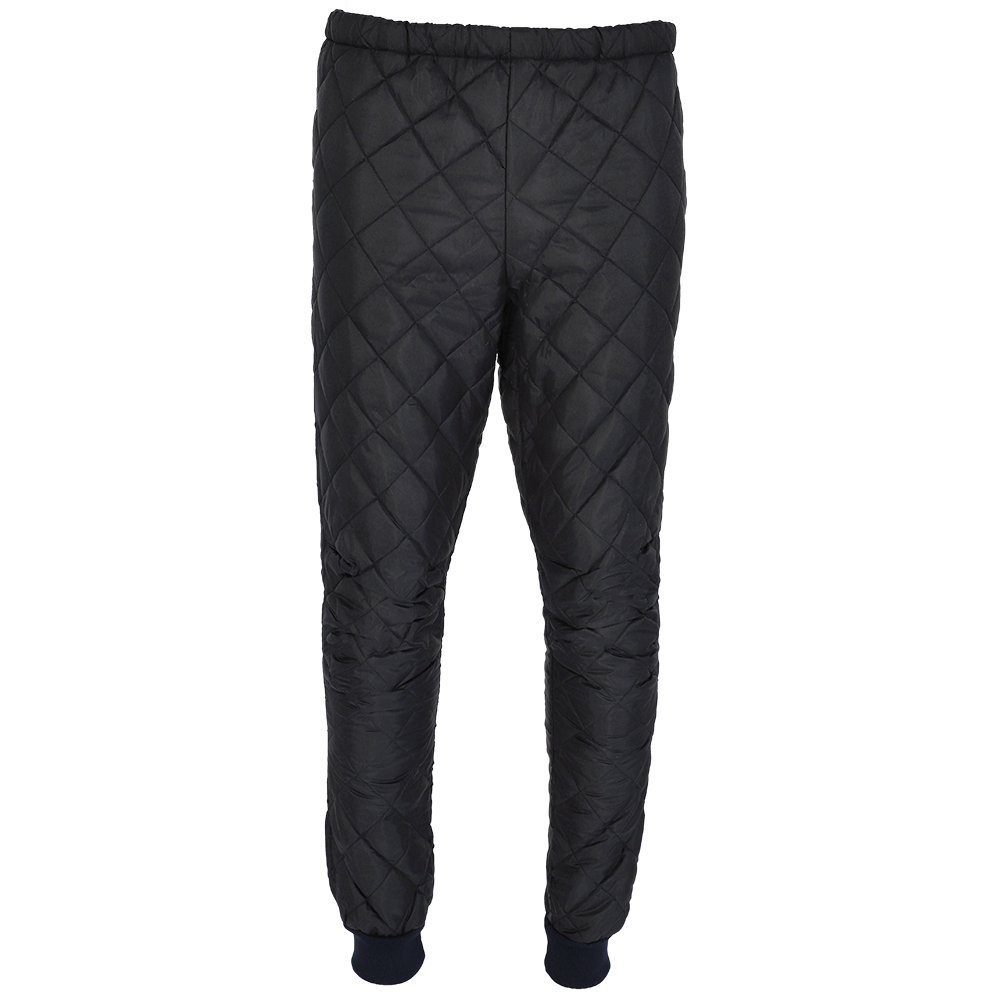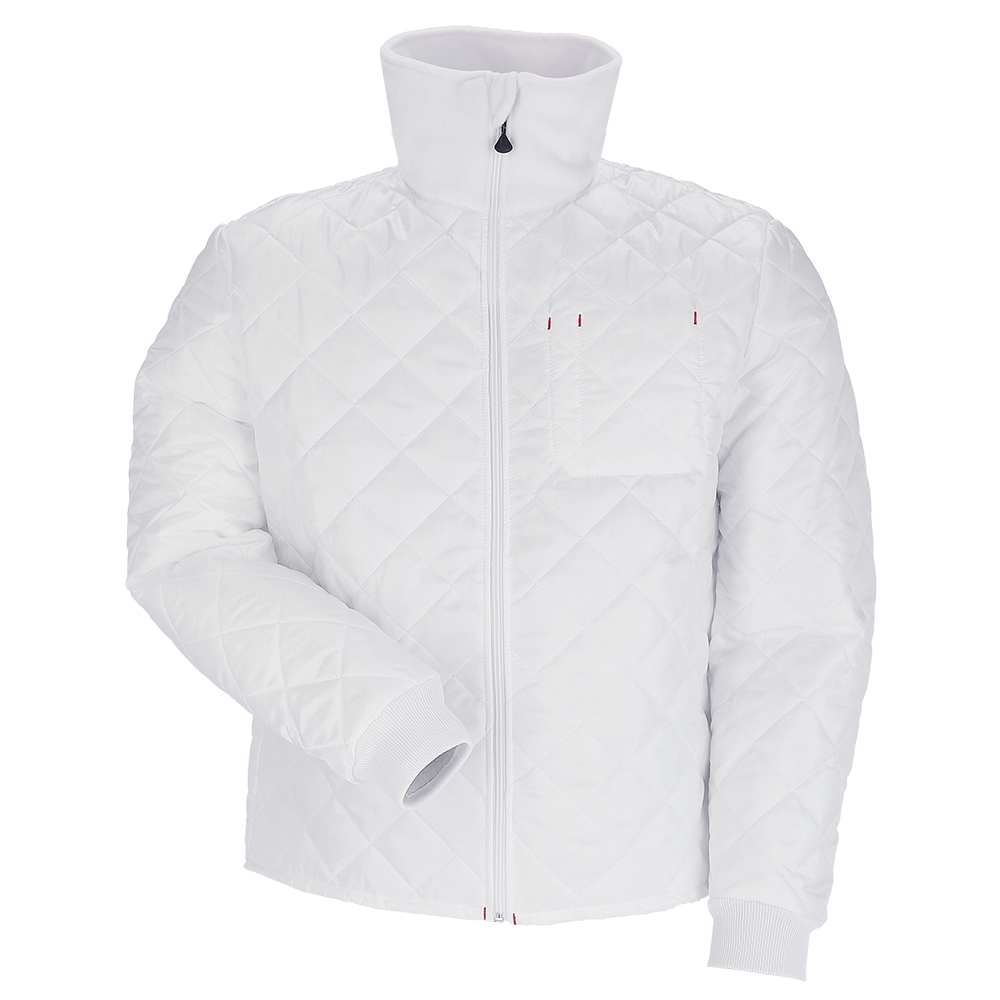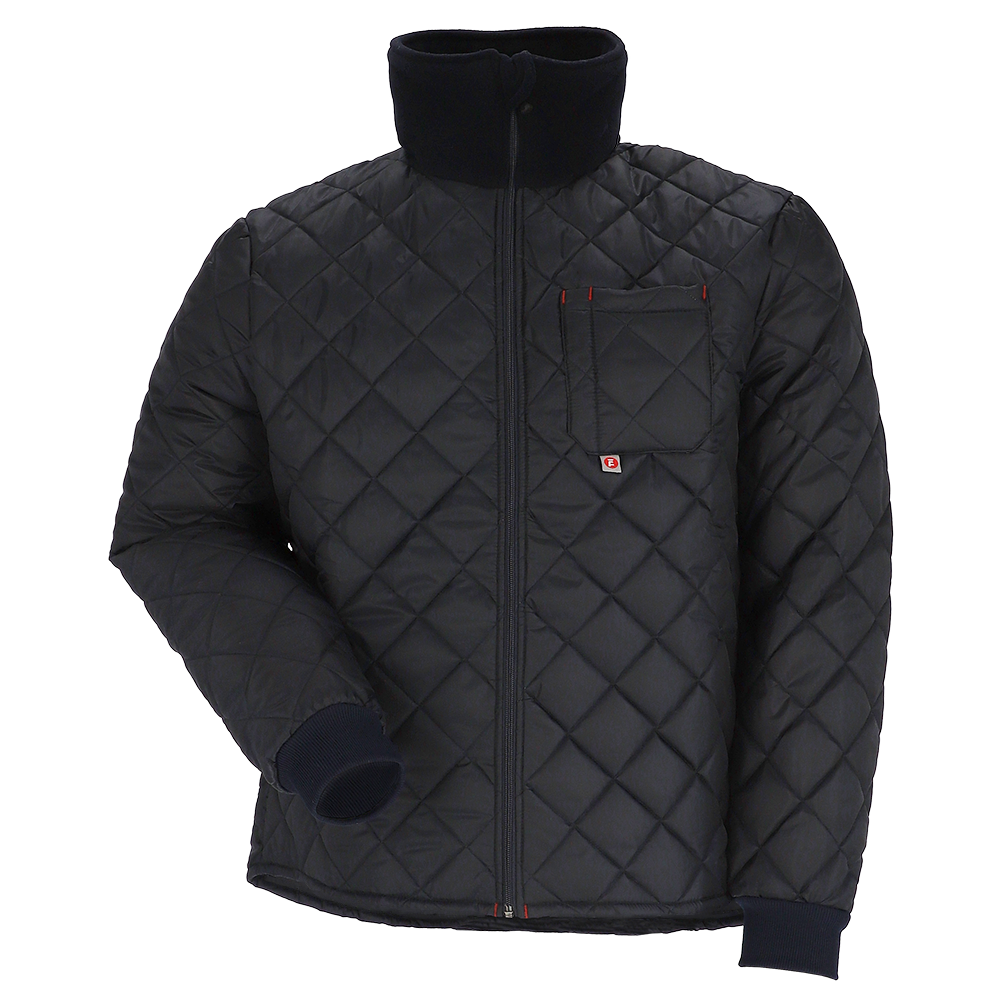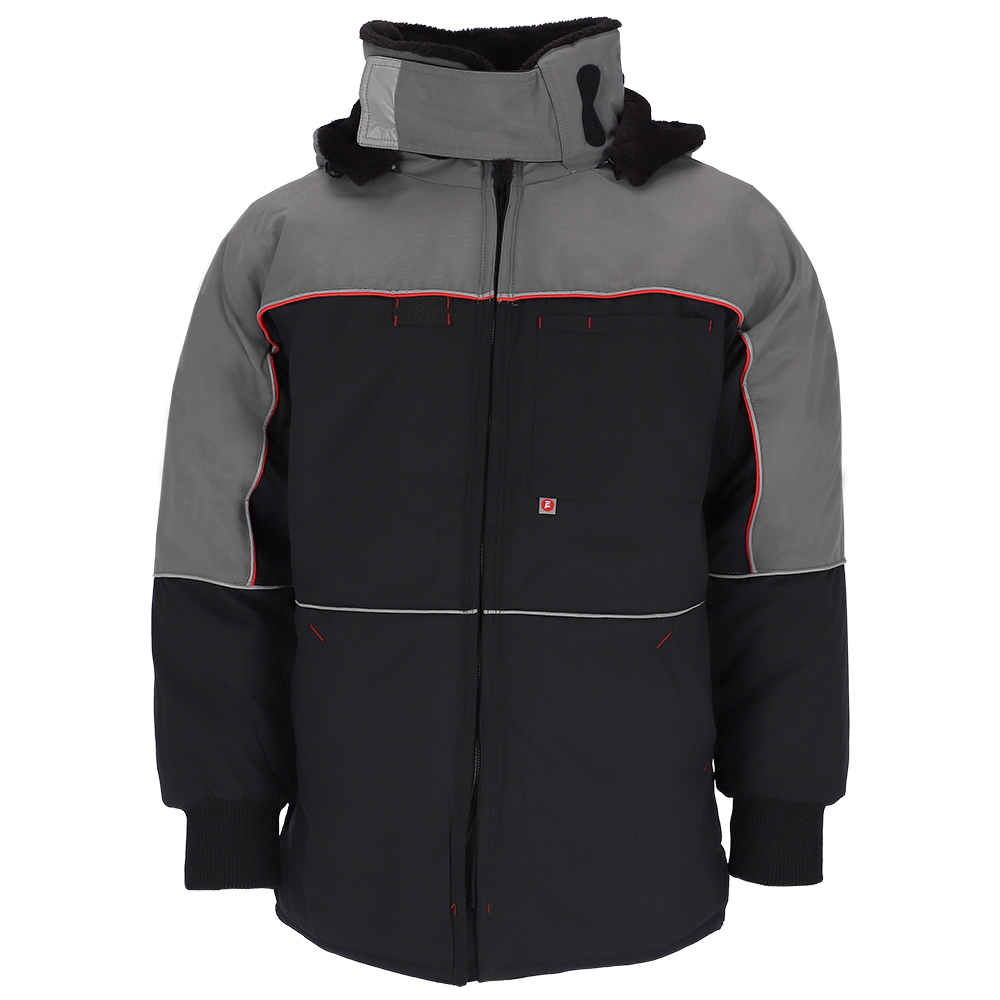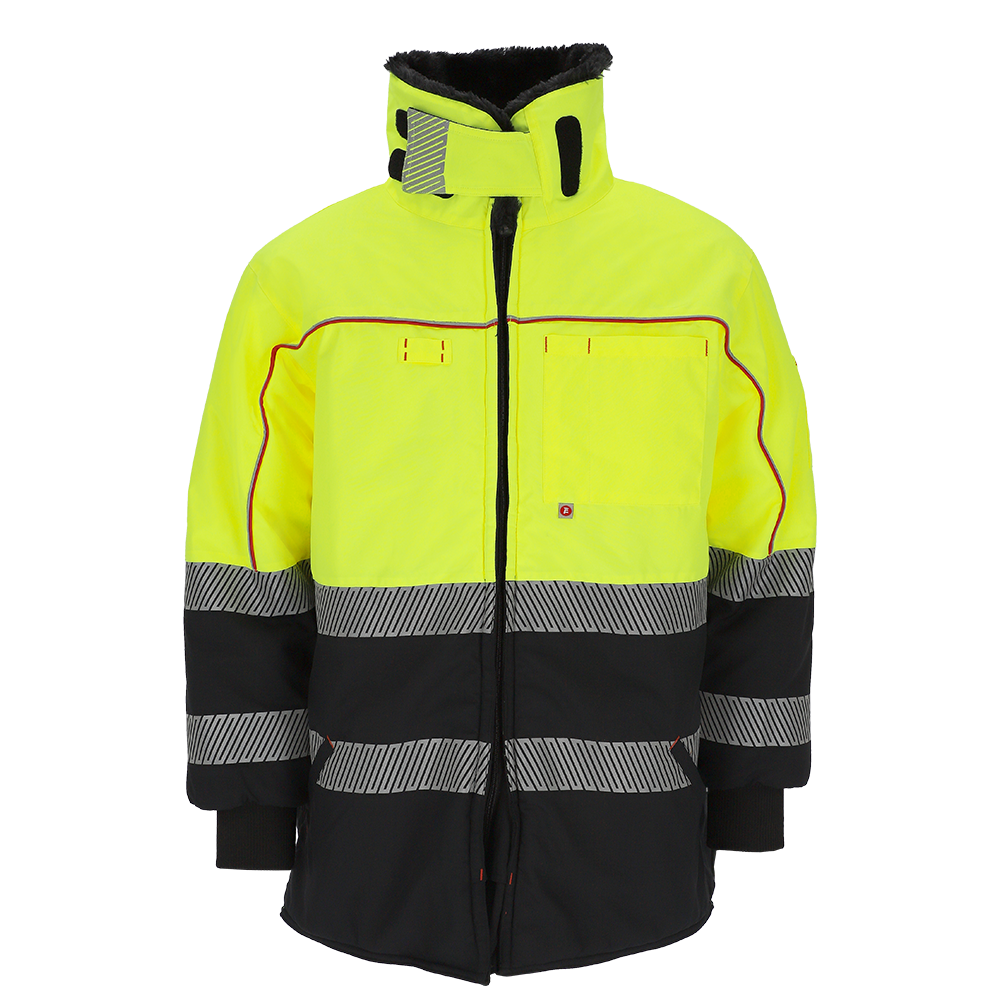Quilting
Functionality and Benefits:
Quilting helps ensure that the insulation layer remains evenly distributed throughout the garment and does not shift. This is particularly important for cold protective clothing, as even insulation distribution helps maintain the wearer's body temperature and prevents cold spots.
In addition to its practical benefits, quilting also adds an aesthetic dimension to the clothing. It creates visible seams and patterns on the surface of the garment, which can influence both its appearance and the structure of the material.
What Quilting Techniques Exist?
- Traditional Quilting: Layers of fabric are connected through sewing.
- Laser Quilting: Laser cutting machines create precise patterns.
- Ultrasonic Quilting: Ultrasonic waves weld fabric layers together.
- Hot Air Quilting: Fabrics are bonded using hot air.
- Adhesive Quilting: Adhesive bonds the fabric layers.
- Vacuum Quilting: Vacuum compresses the fabric layers together.
Application in Cold Protective Clothing:
In cold protective clothing, quilting plays a crucial role in shielding the wearer from extreme temperatures. Quilted jackets, pants, or overalls often contain multiple layers of fabric and insulation interconnected by the quilting pattern to ensure maximum protection and comfort. When choosing quilted cold protective clothing, attention should be paid to well-crafted seams with no signs of gaps or breaks that could allow cold to penetrate.
Bekleidung von Fortdress

